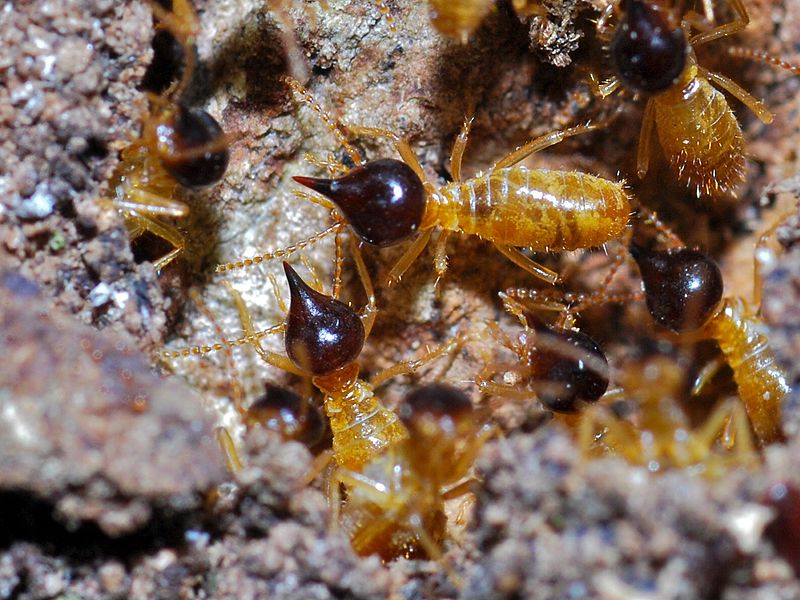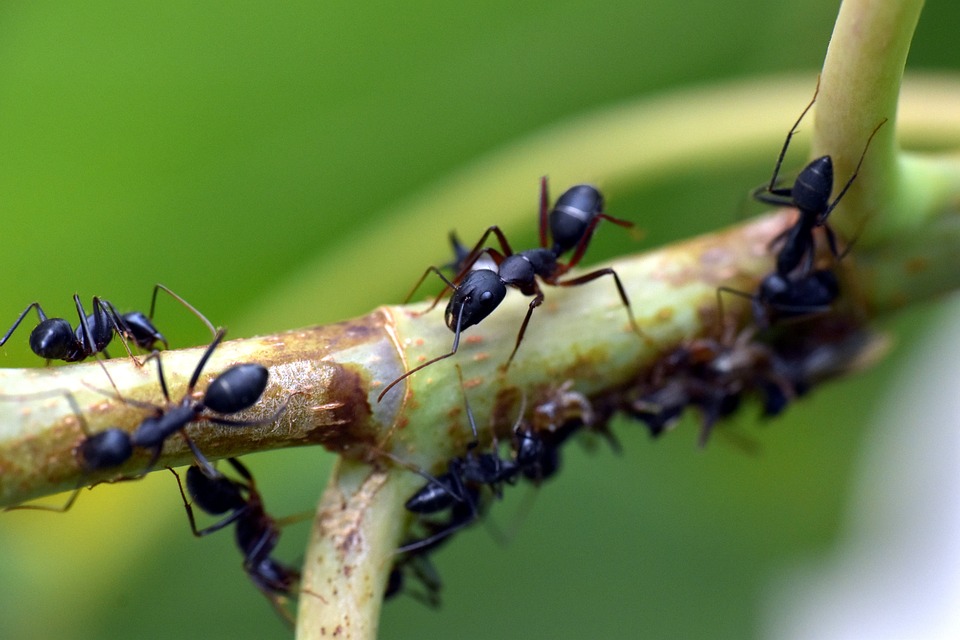Lesson 23
Bees are Buzzing (optional)
Warm-up: Estimation Exploration: Bees (10 minutes)
Narrative
The purpose of an Estimation Exploration is to practice the skill of estimating a reasonable answer based on experience and known information. Students consider a picture of bees to familiarize them with a context that will be used later in the lesson.
Launch
- Groups of 2
- Display image.
- “This is an image of a bee hive. How many bees do you think are in the image?” “What is an estimate that’s too high?” “Too low?” “About right?”
- 1 minute: quiet think time
Activity
- “Discuss your thinking with your partner.”
- 1 minute: partner discussion
- Record responses.
Student Facing

Record an estimate that is:
| too low | about right | too high |
|---|---|---|
| \(\phantom{\hspace{2.5cm} \\ \hspace{2.5cm}}\) | \(\phantom{\hspace{2.5cm} \\ \hspace{2.5cm}}\) | \(\phantom{\hspace{2.5cm} \\ \hspace{2.5cm}}\) |
Student Response
For access, consult one of our IM Certified Partners.
Activity Synthesis
- “Is anyone’s estimate less than 100? Is anyone’s estimate greater than 1,000?”
- “Based on this discussion, does anyone want to revise their estimate?”
- “What are some other insects or bugs you know or have seen?”
Activity 1: Termites, Ants, and Bees (20 minutes)
Narrative
In this activity, students use rounding skills to make sense of numbers in the context of insect population. Students use given numerical facts about insects to determine what a variety of numbers could represent. For many of the numbers, several choices are possible.
The work here offers students many opportunities to attend to precision (MP6). For instance, students may say that 2.4 represents the length of an ant or 30 represents how long a queen termite lives. Urge students to clarify the quantities they stated: “Did you mean 2.4 inches?” “Does 30 represent how many months a queen termite lives?”
Advances: Reading, Writing
Launch
- Groups of 2
- “An entomologist is a scientist who studies insects. Today, we’ll learn some facts about a few insects.”
- Read facts aloud. Clarify new words if needed.
Activity
- 2 minutes: independent work time
- 8 minutes: partner work time
- Monitor for students who:
- think of multiple quantities that the same number might represent
- use estimation in their reasoning
Student Facing
Here is some information about insects:
Termites
- Size of a colony: 100–1,000,000
- A queen lives for 30–50 years.
- There are 3,000–3,500 species of termites.
- The length of a termite is 4 to 15 millimeters.
-
In some species, the mature queen may produce around 40,000 eggs a day.

Odorous House Ants
- Size of colony: up to 100,000
- A queen lives for 300–1,800 days.
- The length of an ant is 1.5–3.2 millimeters.
- Foraging ants travel up to 700 feet from their nests.
-
There are 12,000–22,000 possible species.

Honey Bees
- Size of a hive: 10,000–60,000
- There are around 500 drones in a hive.
- A queen can lay about 1,500–2,000 eggs each day.
- A hive produces 7–40 liters of honey in a season.
- The length of a bee is 10–20 millimeters.

- Here are some numbers that could represent facts about termites, house ants, and honey bees. What might each number represent?
number what it might represent 2.4 8 487 1,794 6,905 20,799 530,097 - Add another number to the list. What about the insects might this number represent?
- Discuss your answers with your partner. Be prepared to show or explain your reasoning.
Student Response
For access, consult one of our IM Certified Partners.
Activity Synthesis
- Invite previously selected students to share their responses and reasoning.
- “Was there any number that could represent only one possible fact about termites, ants, or honey bees?” (2.4 represents the length of an ant in millimeters, and 530,097 represents the size of a termite colony.)
- “Was there a number that could represent many facts about the insects?” (487, 1794, 6905)
- “What could 487 definitely not be?” (Sample response: The length of any of the insects in millimeters.)
- “In the next activity, we are going to look at bees and investigate how a bee population changes over time. Studying population changes is something that many scientists do in many fields. ”
Activity 2: Bee Population (15 minutes)
Narrative
In this activity, students investigate how a bee population changes over time. Population modeling is an important application of mathematics in many fields of study such as demography, biology, and infectious diseases. Students use a simplified model to show population change over time by using the number of individuals added and subtracted at each time interval:
\(\displaystyle \text{new population} = \text{old population} + \text{inflow} – \text{outflow}\)
In this activity, students are given some of the numbers and are to reason whether they need to add or subtract to fill in the missing information.
Supports accessibility for: Conceptual Processing, Attention
Launch
- Groups of 2
- “Bees live in hives. We saw a picture of the inside of a hive in the warm-up. The number of bees in one hive can change throughout the year. For example, in the summer, when there are lots of flowers blooming, the population grows. In the winter, the population is a lot smaller.”
- “Beekeepers and entomologists are interested in knowing how many bees are in a hive over time. An entomologist is a scientist who studies insects.”
- “The table shows information about the number of bees in one particular hive. Look at the first row. What information do we get about the beehive?” (There were 20,000 to start with, 9378 bees were born or added, and 342 bees left.)
- Display the table in the activity.
- “What do you notice? What do you wonder?”
- 30 seconds: quiet think time
- Share responses.
- “How might we find out the number of bees at the beginning of June?”
- 30 seconds: quiet think time
- 1 minute: partner discussion
- Share responses.
- “Use the given information to complete the table.”
Activity
- 10 minutes: independent work time
- 2 minutes: partner discussion
- Monitor for students who:
- use the standard algorithm to add and subtract the numbers
- are able to explain why they used addition or subtraction
Student Facing
An entomologist records the number of bees in their beehive over the course of several months. They record:
- the number of bees at the beginning of the month
- how many bees left (and didn’t return) during the month
- how many new bees were added to the hive during the month
Unfortunately, some of the entries in the table are missing.
-
Complete the missing information in the table.
month bees in the hive at the beginning of the month new bees bees that left the hive May 20,000 9,378 342 June 15,870 970 July 14,965 August 58,107 28,980 September 30,017 No data No data - Discuss your responses with your partner. Be prepared to show or explain your reasoning.
Student Response
For access, consult one of our IM Certified Partners.
Activity Synthesis
- “How did you decide which operation to use to complete each cell?” (If I had the starting number, I could add the new bees and subtract the bees that left to get the number in the next month.)
- “How did you find the number of bees in the hive at the beginning of the month?”
- “What other mathematical questions can we ask?” (How many total bees were born? How many total bees left the hive? What month had the most or fewest bees?)
Lesson Synthesis
Lesson Synthesis
“Today we explored how the population of bees can change over time.”
“What did you learn today about the mathematics an entomologist might use as part of their work?” (They use numbers to describe insect populations and to keep track of the number of insects in a colony. They use big and small numbers and they add and subtract a variety of numbers.)